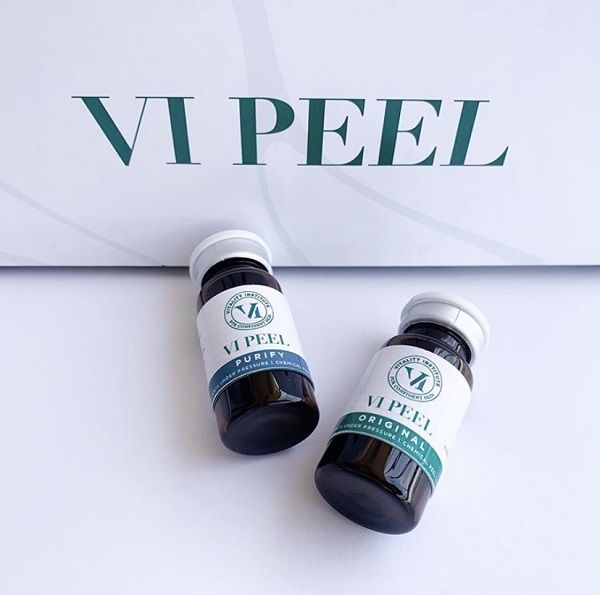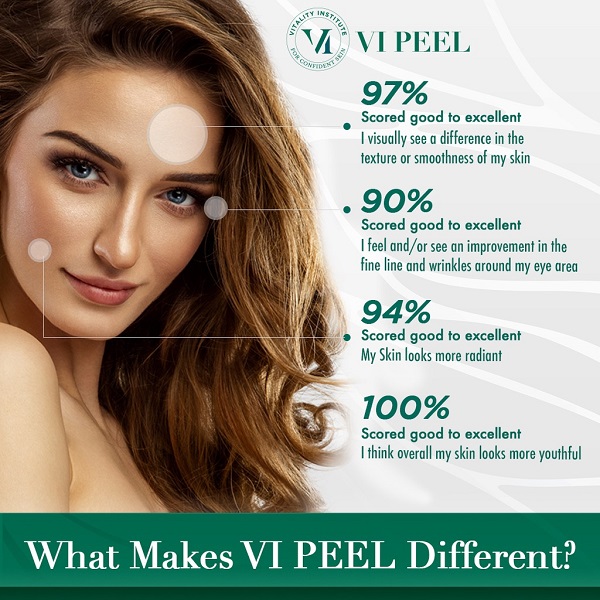VI Peel Treatments from U.S. Dermatology Partners
An Innovative & Effective Chemical Peel Solution
Chemical peels are a popular cosmetic dermatology solution to improve skin texture, tone, and appearance. There are numerous types of chemical peels available, but the unique formulation of the VI Peel treatment system provides exceptional results to improve the appearance, health, and vitality of the skin. You can learn more on this page or by getting in contact with the skilled dermatologists at U.S. Dermatology Partners for a consultation visit.
Find This Service Near You
What Is VI Peel?

Each type of chemical peel has a unique formulation that differentiates it from other types of skin peels. VI Peel contains a blend of active ingredients, including trichloroacetic acid (10-12%), tretinoin (.1-.4%), vitamin C (4%), salicylic acid (10-12%), phenol (10-12%), and a variety of minerals. Additionally, VI Peel contains numbing ingredients, so the process is significantly more comfortable than other chemical peels. In addition to peeling away the outer layers of dead skin cells, a VI Peel penetrates the outer epidermis layers of skin to infuse the deeper, dermis layers with these rejuvenating ingredients, delivering added benefits. The result of treatment is an immediate rejuvenation and improvement in skin health and appearance common after receiving other superficial peels. In the long term, the VI Peel leads to increased production of collagen, elastin, and other skin proteins as well as faster cell turnover that creates youthful, healthy skin.
Who Is a Good Candidate for a VI Peel?
A VI Peel is a safe, and effective chemical peel for almost any patient. Unlike other chemical peels, the unique blend of ingredients makes the VI Peel safe and gentle enough to be used on all parts of the face (even sensitive skin around the eyes) as well as the neck, hands, chest, and back. It’s also safe for people of all skin types and skin tones. From sun damage to the early warning signs of aging, there are five different formulations of VI Peel available that are specifically created to address a range of specific skin health concerns. During a cosmetic dermatology consultation, your dermatologist can help you determine which of the five VI Peel formulations is the best for your unique set of skincare needs.
Additionally, VI Peel is a recommended chemical peel option for people with acne-prone skin who are currently dealing with a breakout. The VI Peel helps to reduce the length and severity of acne breakouts by decreasing oil production and inflammation, killing bacteria, and removing the outer layers of skin to lessen the risk for clogged pores.
While VI Peel is typically considered safe for people of all skin tones, there is some risk for hyperpigmentation for people with very dark skin, so patients should always consult with a trained dermatologist to ensure VI Peel is the best treatment option. Additionally, expectant mothers should not receive the VI Peel treatment or any other treatments with products containing salicylic acid or trichloroacetic acid.
How Does the VI Peel Treatment Improve Skin?

Before your VI Peel procedure, your dermatologist will give you a skincare plan to follow leading up to your treatment. Avoiding sun exposure is one of the most important preparatory steps recommended by dermatologists for people planning to receive a VI Peel treatment. Sun exposure before or after a VI Peel treatment can affect the results, leading to hyperpigmentation, poor healing, and other concerns.
The VI Peel treatment itself is usually completed within half an hour, and it’s essentially painless thanks to the numbing agent contained in VI Peel solutions. Individual aesthetic providers may set slightly different treatment protocols, but the procedure involves gently cleansing the skin before applying two layers of VI Peel solution. The first layer will create numbness and begin dissolving the dead skin cells. The second layer is the deeper treatment, creating micro-injuries that jumpstart healing and promote healthy cell turnover and collagen production while infusing the deep layers of skin with rejuvenating ingredients. You’ll leave the VI Peel in place for between four to six hours and follow your dermatologist’s instructions to remove the solution later in the day. Aftercare products like post-peel towelettes, gentle cleanser, and sunscreen will be provided to help you get the full benefit of the peel.
Are There Side Effects to VI Peel Treatment?

In addition to peeling, patients may also experience a variety of mild to moderate side effects, including:
- Burning or stinging
- Itching
- Dryness
- Blistering
- Pain or sensitivity
- Red or discolored skin
- Inflammation and swelling
In severe cases, allergic response, infection, and scarring are possible, but these types of responses are very rare. You should let your dermatologist know right away if your side effects get worse over time, you’re worried about infection, or the discomfort is significant.
How Long Will a VI Peel Treatment Last?
The results of a VI Peel and the retreatment recommendations will vary dramatically from patient to patient, depending on the specific skin concerns. Your dermatologist will not usually recommend having a VI Peel more than once a month. To control severe acne and other chronic skin health conditions, your dermatologist may schedule a set of treatments spaced four to six weeks apart to clear up the breakout followed by periodic retreatment. To prevent and address signs of aging or sun damage, receiving a VI Peel two or three times a year is typically effective. Your dermatologist will work with you to create a specific treatment plan to address your individual needs.
VI Peel Before & After Image
*Results may vary by individual



